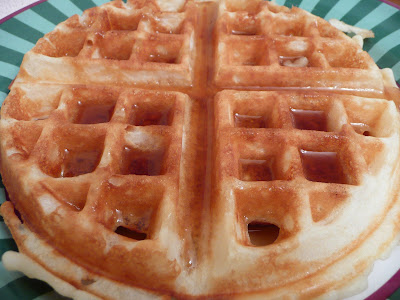
 These pretzel bites were a surprise baking event this past weekend. You see, I am on a quest to make a white chocolate cookie. There are a ton of recipes out there for white chocolate chip/chunk cookies or white chocolate macademia nut, but what I want is a cookie with the white chocolate in the batter. I had an epic failure this weekend trying to adapt a recipe for chocolate cookies into white chocolate (batter baked too thinly, scraped directly into the trash failure). In the course of attempting to make those, I did the math wrong and ended up with an extra half cup of melted butter. What to do with extra melted butter? Make pretzel bites of course!
These pretzel bites were a surprise baking event this past weekend. You see, I am on a quest to make a white chocolate cookie. There are a ton of recipes out there for white chocolate chip/chunk cookies or white chocolate macademia nut, but what I want is a cookie with the white chocolate in the batter. I had an epic failure this weekend trying to adapt a recipe for chocolate cookies into white chocolate (batter baked too thinly, scraped directly into the trash failure). In the course of attempting to make those, I did the math wrong and ended up with an extra half cup of melted butter. What to do with extra melted butter? Make pretzel bites of course!My pretzel bites are adapted from a Country Living recipe. The original recipe called for rolling them into pretzel shapes, which my sister and I have done before. I decided that was too tedious, and that they would taste just as awesome in little pretzel ball form. For more tips on what "smooth and elastic" dough should look like, see my posts on Crusty French Rolls and Pizza Crust.
Pretzel Bites (approximately 25 golf ball sized bites)
1 1/2 c. warm water (about 110F)
1 package active dry yeast (2 1/4 tsp.)
1 tsp. brown sugar
4 c. bread flour
2 tsp. salt
4 Tbs. butter (melted) (1/2 stick)
1 Tbs. molasses
4 c. water
1/4 c. baking soda
2 Tbs. butter (melted)
2 Tbs. Kosher salt (the chunky kind of salt)
In a 2 c. liquid measuring cup, combine the yeast, water, and brown sugar, stirring to dissolve, and let stand until foamy, about 5 minutes. In the bowl of a stand mixer fitted with a dough hook, whisk (by hand) together the flour and 2 tsp. salt. Add the half stick of melted butter, the molasses, and the yeast mixture. I usually stir with a wooden spoon just to get everything sort of incorporated before I turn on the mixer.
Knead the dough with the mixer for 8-10 minutes, or until the dough is smooth and elastic. The dough will smack against the sides of the bowl and the bowl will be left pretty clean by that point. With floured hands, pull the dough off of the hook and pull and tuck it into a smooth ball.
Grease a glass bowl (I just use cooking spray), and place the ball of dough upside down, then turn it right side up so that the top of the dough is greased. Cover loosely with plastic wrap and set in a warm, draft-free place to rise. Since I was attempting (and failing) to bake cookies, I just let it rise on top of the heated oven. You will want to let it rise until it doubles in size, which depending on various factors will take roughly an hour.
Preheat the oven to 400F. Punch down the dough. You could put it back into the stand mixer, but at this point I usually just find it easier to knead by hand. You will want to knead the dough for about 5 minutes on a lightly floured surface. So as to keep clean-up easy, I tend to flour either an old plastic placemat or one of those flexible cutting boards, and then that goes into the sink, rather than working directly on the countertop.
Tear off pieces of dough and roll them in your hands until they are about the size of golf balls. Set them on a floured surface, lightly mist with cooking spray, and cover loosely with plastic wrap. Let the balls rise for 15 minutes.
While the dough is rising, bring the 4 c. water and 1/4 c. baking soda to a boil in a saucepan. Alternatively, you can use a large stockpot and double the proportions. Drop the pretzel balls into the boiling water for about 45 seconds, turning them throughout. Using a strainer, place the poached bites onto a parchment-lined cookie sheet. Using a pastry brush, coat the pretzel bites with melted butter, and liberally sprinkle with the Kosher salt. Bake for approximately 15 minutes, or until they are golden-brown.
You can serve these with various kinds of sauces (I think a cheddar-based sauce would be delicious), but I prefer them plain or dipped in a little melted butter.












